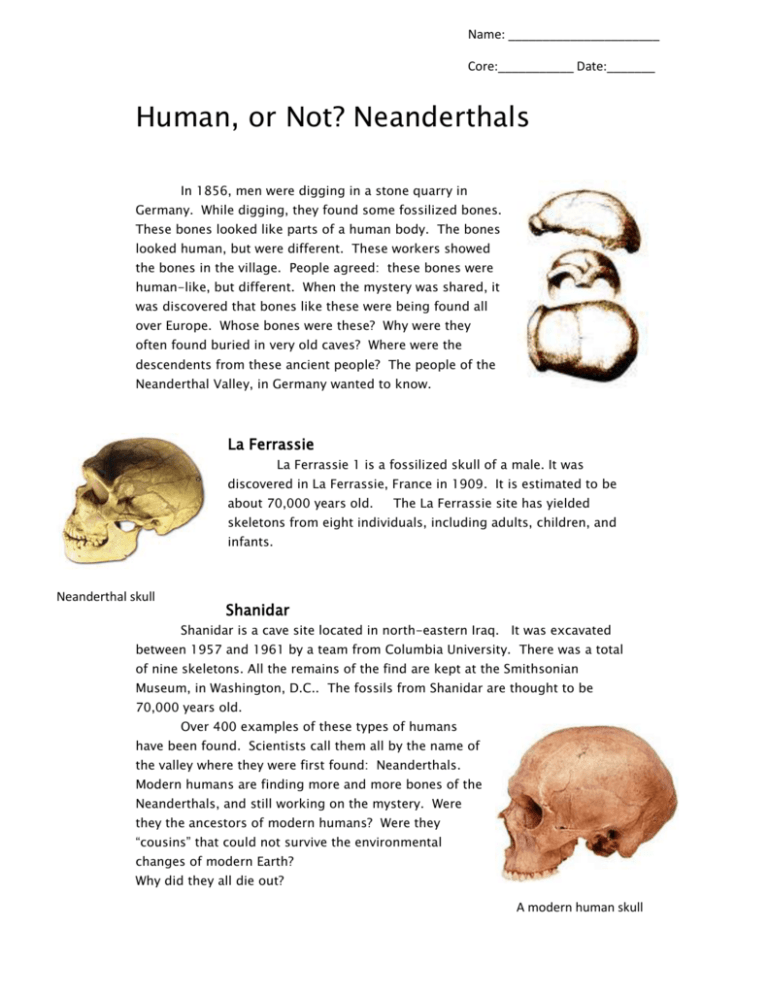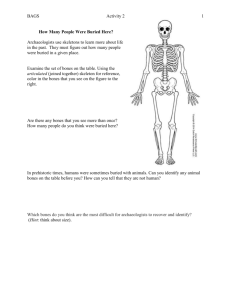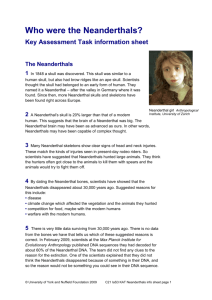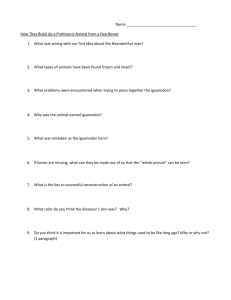Neanderthal fossils
advertisement

Name: ______________________ Core:___________ Date:_______ Human, or Not? Neanderthals In 1856, men were digging in a stone quarry in Germany. While digging, they found some fossilized bones. These bones looked like parts of a human body. The bones looked human, but were different. These workers showed the bones in the village. People agreed: these bones were human-like, but different. When the mystery was shared, it was discovered that bones like these were being found all over Europe. Whose bones were these? Why were they often found buried in very old caves? Where were the descendents from these ancient people? The people of the Neanderthal Valley, in Germany wanted to know. La Ferrassie La Ferrassie 1 is a fossilized skull of a male. It was discovered in La Ferrassie, France in 1909. It is estimated to be about 70,000 years old. The La Ferrassie site has yielded skeletons from eight individuals, including adults, children, and infants. Neanderthal skull Shanidar Shanidar is a cave site located in north-eastern Iraq. It was excavated between 1957 and 1961 by a team from Columbia University. There was a total of nine skeletons. All the remains of the find are kept at the Smithsonian Museum, in Washington, D.C.. The fossils from Shanidar are thought to be 70,000 years old. Over 400 examples of these types of humans have been found. Scientists call them all by the name of the valley where they were first found: Neanderthals. Modern humans are finding more and more bones of the Neanderthals, and still working on the mystery. Were they the ancestors of modern humans? Were they “cousins” that could not survive the environmental changes of modern Earth? Why did they all die out? A modern human skull











